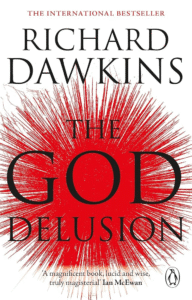Navigating the “Problematic” Love: An Exploration of Ali Hazelwood’s Problematic Summer Romance

A Summer in Sicily: Unveiling a Complex Connection
Ali Hazelwood’s Problematic Summer Romance plunges readers into the nuanced and often uncomfortable realm of an age-gap relationship, set against the breathtaking backdrop of a Sicilian destination wedding. As part of the “Not in Love” series, this novel skillfully tackles themes of agency, self-discovery, and societal perceptions that inevitably color unconventional love stories. At its core, the book follows Maya Killgore, a 23-year-old grad student grappling with her future, and Conor Harkness, her 38-year-old brother Eli’s best friend and business partner. Their intertwined history is a tangled web: a deep three-year phone friendship that abruptly ceased ten months prior, leaving Maya hurt and confused. The forced proximity of Eli and Rue’s wedding in Taormina, Italy, throws Maya and Conor back into each other’s orbits, reigniting a simmering tension they’ve both tried to suppress.
The Weight of the “Problematic”: Conor’s Internal Struggle
The “problematic” in the title is more than just a catchy phrase; it’s a fundamental aspect of the narrative. Conor is acutely aware of the fifteen-year age difference and the perceived power imbalance. As a successful biotech investor, he grapples with a profound sense of responsibility and a genuine fear of exploiting Maya’s relative youth and inexperience. His repeated insistence that their relationship is “problematic” stems from deep-seated ethical concerns and a past marred by difficult family dynamics and addiction, rendering him incredibly cautious. This intense internal struggle defines his journey, showcasing a hero who is deeply moral and protective, even when it means denying his own desires.
Maya’s Agency: Challenging Perceptions and Asserting Desire
Maya, however, is far from a passive participant. Despite her age, she’s intelligent, strong-willed, and fiercely independent. She actively challenges Conor’s paternalistic approach, asserting her right to make her own choices and pursue her feelings. Her frustration with being infantilized, not just by Conor but by her brother and society, is a powerful and relatable aspect of her character. Hazelwood expertly crafts Maya’s journey of self-advocacy, demonstrating how she pushes back against societal norms and personal insecurities to claim her desires.
Weaving the Past and Present: The Sicilian Tapestry
The novel masterfully uses flashbacks to illuminate the rich history of Maya and Conor’s relationship, primarily built through their extensive phone conversations. These glimpses into their past reveal a deep emotional intimacy that transcends physical attraction, making Conor’s initial rejection of their relationship all the more poignant. The Sicilian setting is more than just a beautiful backdrop; the ancient ruins, delectable food, and volcanic activity of Mount Etna mirror the explosive emotions and simmering tension between the protagonists. The chaotic destination wedding itself provides numerous opportunities for the pair to be thrust together, forcing them to confront their long-suppressed feelings amidst a series of humorous and dramatic mishaps.
Beyond Romance: Themes of Family and Self-Worth
Beyond the central romance, Problematic Summer Romance touches on broader themes. It delves into the complexities of familial relationships, particularly Maya’s bond with her brother Eli and her own struggles with anger management stemming from past trauma. The novel also subtly explores women in STEM, a recurring thread in Hazelwood’s works, though here it offers a different perspective as Maya grapples with her career path and the pressure to tie her self-worth to academic achievement.
A Nuanced Conclusion: Defining Love on One’s Own Terms
Ultimately, Problematic Summer Romance offers a nuanced exploration of a love story that defies easy categorization. While the age gap remains a persistent point of contention, Ali Hazelwood ensures that the narrative isn’t about overlooking it, but rather about confronting it with honesty and sensitivity. The book champions the idea that true connection can flourish even in the face of perceived “problems,” and that individuals, regardless of age, possess the agency to define their own happiness and love. It’s a testament to Hazelwood’s ability to craft compelling characters and intricate emotional landscapes, leaving readers with a romance that is both steamy and profoundly thought-provoking.




















